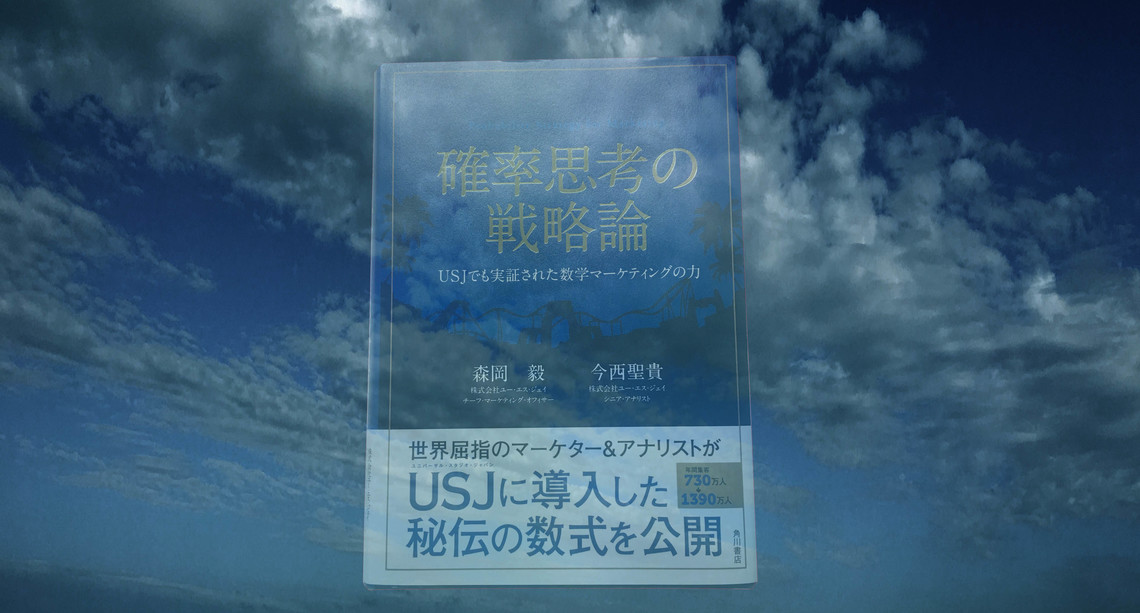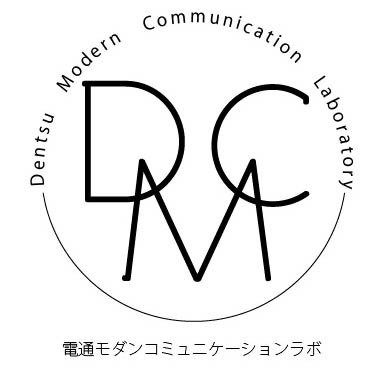Note: This website was automatically translated, so some terms or nuances may not be completely accurate.
Strategic Thinking with Probability
Hello. I'm Shiraishi, a die-hard private school liberal arts student who only touched math through high school. Despite that background, the book's reputation among my peers was so overwhelming that I cautiously picked up a copy of "Strategic Thinking with Probability: The Power of Mathematical Marketing Proven at USJ" (Kadokawa Shoten) around year-end. It proved more thrilling than any poorly written fiction, and I found myself unable to stop turning the pages. Carried away by the momentum, I'm belatedly introducing it here (the book was published back in June 2016).

The "Tricks and Mechanisms" Behind USJ's Astonishing V-Shaped Recovery
The book's obi (advertising strip) boasts, "World-class marketers & analysts reveal the secret formulas implemented at USJ." Indeed, about one-sixth of the book's pages are devoted to explaining the mathematical models at the end. Those who enjoy mathematics might get excited by the beautiful equations, but unfortunately, I lack such lofty abilities... So, what exactly made this book so thrilling?
This book is a co-authored work by Tsuyoshi Morioka and Masataka Imanishi. Mr. Morioka joined USJ in 2010 after working at P&G, and Mr. Imanishi, also coming from P&G, joined USJ in 2012 at Mr. Morioka's request. Thanks to their tireless efforts, Universal Studios Japan achieved a remarkable V-shaped recovery over the past five years, increasing attendance at an astonishing rate of one million people annually. By fiscal year 2015, annual visitors reached 13.9 million. Considering it was 7.3 million just five years prior, this represents an incredible achievement of nearly doubling attendance.
He states unequivocally that this extraordinary result is "not magic, but rather magic tricks with seeds and mechanisms" (p. 2) and that "strategies based on probability thinking [...] are magic tricks with seeds and mechanisms, so they can be replicated by anyone" (p. 304). This book unravels those seeds and mechanisms. It's bound to be fascinating.
Of course, I encourage you to consult the book itself for the finer details. But if you're someone like me who made the unfortunate and wasteful mistake of being intimidated by the title ("Mathematical Marketing!") and hesitating to pick it up, I want to tell you this:
Unparalleled usefulness and entertainment value for a marketing-related book
I felt this book is structured across four distinct layers.
① Foundational marketing theory based on unique perspectives
② Case studies in real-world markets
③ Ideas and mindset (including brute force) for putting theory into practice
④ The resolve and emotional pain of decision-makers, and the anguish that persists even after achieving objectives
① and ② are essentially the "marketing textbook" elements. Naturally, these sections also clearly explain the marketing theories cultivated at P&G and applied at USJ, along with actual market events.
However, I felt that what gives this book unprecedented usefulness and appeal as a marketing-related work is not just ① and ②, but what unfolds beyond them in ③ and ④.
Section ③: Overcoming the myriad problems and barriers that arise when executing strategies that seem theoretically sound in real-world practice, using every means possible and giving it your all. Section ④: The resolve to make the right decisions, steel your heart, set aside emotion, and choose the strategy with the highest probability of success. And the fact that, even if successful, there will inevitably be people who react negatively. I feel, perhaps presumptuously, that the authors wanted to convey that this dramatic aspect is also part of "the work of marketing."
Here's an episode about demand forecasting for USJ's "The Wizarding World of Harry Potter," a project that gambled the company's future. While Mr. Morioka himself conducts this forecasting, he also asks his former ally, Mr. Imanishi, to perform a separate demand forecast using a different approach to increase accuracy. Taking care not to discuss their specific methods, each conducted their analysis. Finally, on the day they were to share their results, both wrote the numbers they believed in on their palms and revealed them simultaneously. Their forecasts were nearly identical, and they grinned at each other... a moment of pure coolness, just like a scene from a movie or drama.
What Japanese people, especially those involved in marketing, should possess
In the final chapter, Mr. Morioka writes:
For me, this book has long been the one I most wanted to write. I wanted to share my own thoughts widely on what I consider the most critical challenge facing Japan going forward. That challenge is this : " Japanese people should prepare more rationally before engaging in mental battles. " Publishing this book is an opportunity to widely share the know-how we have cultivated, which offers one answer to that challenge. (P304-5)
It's often said that Japanese people tend to value emotion and empathy over rationality. Hence the call to acquire more rational thinking! This is correct, and as markets expand globally and innovative products and services flow in from overseas, it will undoubtedly become increasingly necessary for Japanese people. On the other hand, the mental state is equally, if not more, important. People who create innovation are always brimming with resolve, passion, and even a touch of madness. This book lectures on rational thinking methods in sections ① and ②, then discusses the mental state in sections ③ and ④. It can truly be said to cover both the "rationality" and the "spirit" that marketing professionals should possess, leaving nothing out.
Reading this book, one even gets the feeling that the authors mathematically predicted how its publication would invigorate the field of marketing and enrich Japan's economy somewhat more than before, and that they might now be observing that very progression.
I highly recommend picking up a copy.

Was this article helpful?